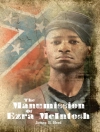In ‘Bubbles of the Foam, ‘ F. W. Bain weaves a rich tapestry of narratives imbued with philosophical depth and intricate characterizations. This collection of short stories navigates the realms of the absurd and the profound, interlacing elements of fantasy and realism. Bain’s style is marked by a whimsical yet contemplative tone, allowing readers to drift through a world that dances between light-heartedness and existential musings. The literary context of this work aligns with the late Victorian era, characterized by a surge in interest toward allegorical storytelling and the exploration of human experiences through metaphorical lenses. F. W. Bain was an English author, poet, and playwright, whose diverse background in metaphysical literature and Indian culture deeply influenced his writing. His extensive travels and experiences aim to articulate the spiritual and philosophical complexities of life, showcasing a keen understanding of Eastern mysticism and Western thought. Bain’s unique perspective allows him to create narratives that resonate with both the intellect and the emotions, reflecting his aspirations to bridge cultural divides. Readers searching for a thought-provoking exploration of life’s intricate layers will find delight in Bain’s ‘Bubbles of the Foam.’ This collection is not merely a series of stories but an invitation to ponder the essences of existence, making it a significant addition to any literary enthusiast’s library.
เกี่ยวกับผู้แต่ง
Francis William Bain (1863–1940) was an English writer, renowned for his role as a translator of Indian classical literature. Bain held a unique literary style, capturing the essence of Indian philosophy and the lush tapestry of its mythologies with a blend of fantasy and romantic fiction. Despite claims of translating directly from ancient Sanskrit texts, his works were later revealed to be largely original, albeit heavily influenced by Indian lore and Western prose of the fantasy genre. Bain’s career as an author was marked by his most acclaimed work, ‘Bubbles of the Foam’ (1912), a tale that intertwines the fables of a mystical India with the threads of romance and tragedy. This book, part of his ‘A Digit of the Moon’ series, allowed Western audiences to savor the exotic flavors of Eastern narratives through Bain’s imaginative lens. Throughout, he maintained a penchant for florid language and metaphysical exploration, and although his authenticity as a translator was questioned, his contributions to the cross-cultural literary landscape remain a topic of discussion. Bain’s textual tapestry, weaving romanticized visions of the East for the West, typifies his complex legacy in the annals of early 20th-century literature.












